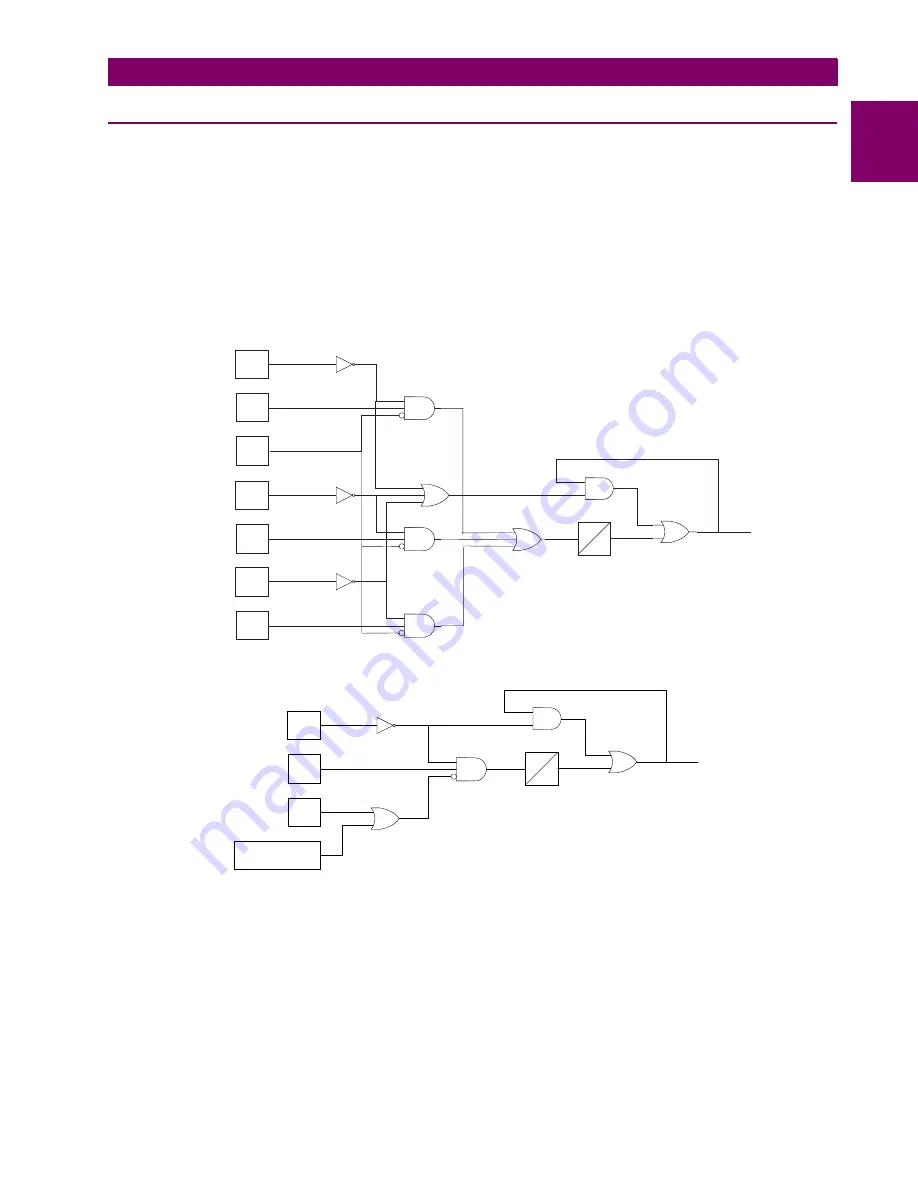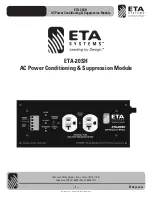
GE Power Management
ALPS Advanced Line Protection System
1-11
1 PRODUCT DESCRIPTION
1.4 AUXILIARY PROTECTION FUNCTIONS
1
1.4 AUXILIARY PROTECTION FUNCTIONS
1.4.1 POTENTIAL TRANSFORMER FUSE FAILURE (PTFF)
Because a distance or directional function may operate for a full or partial loss of AC potential caused by one or more blown
fuses, PTFF is provided to block distance and directional function tripping when a fuse failure is detected. If the backup
overcurrent functions 50, 50G, and 51G are not directionally controlled, they are allowed to trip during a potential fuse fail-
ure condition. If any of the backup, overcurrent functions, 50, 50G or 51G, is directionally supervised, then that function is
not allowed to trip. Rather, a second overcurrent function, 50_FF, 50G_FF, or 51G_FF is placed in service during the fuse
failure condition. The pickup level setting of these functions is independent from the normal pickup setting. The PTFF func-
tional logic is shown below.
If AC potential is lost on one or more phases, the Any Phase Under Voltage signal produces a logic 1 output, and the upper
input is present at AND1. The phase undervoltage pickup setting is fixed at 75% of nominal and the pickup-to-dropout ratio
is virtually 100%. The lower input to AND1 is dependent upon whether the fault detector FD has operated or whether one or
more phases of the protected line are de-energized (open). When one or more phases of protected line are open, PTFF is
disabled.
Figure 1–3: POTENTIAL FUSE FAILURE LOGIC DIAGRAMS
If AC potential is lost for any reason, including a blown fuse or fuses, and there is no disturbance on the power system that
operates the fault detector, the AND1 output causes timer TL1 to time out and produce a PTFF output via OR2. The output
of OR2 is routed to AND2 to seal-in the PTFF output, based on the Any Phase Under Voltage signal, so that PTFF output is
maintained as long as the potential is below normal. Setting 714: FUSEFAIL determines whether PTFF operation blocks
distance/directional tripping (FUSEFAIL = YES) or merely issues an event (FUSEFAIL = NO). When the potential returns to
normal, the Any Phase Under Voltage signal resets to remove the seal-in, allowing the PTFF output to reset.
When a fault occurs, with an attendant drop in potential, the Any Phase Under Voltage signal picks up, but the fault detector
operates to prevent an output from AND1. PTFF does not operate on fault conditions.
3 ~
0
V 1
IB
F D
FAULT
D E T E C T O R
V O L T A G E
D E T E C T O R
C U R R E N T
D E T E C T O R
2
1
1
TL1
PTFF
A N Y P H A S E
O P E N
1
2
PTFF3.VSD
VA
IB-A
FD
FAULT
DETECTOR
PHASE
VOLTAGE
DETECTOR
CURRENT
DETECTOR
1A
1A
VB
IB-B
PHASE
VOLTAGE
DETECTOR
CURRENT
DETECTOR
1B
1B
VC
IB-C
PHASE
VOLTAGE
DETECTOR
CURRENT
DETECTOR
1C
1C
2
3~
0
3
TL1
PTFF
2
2
SINGLE PHASE TRIPPING MODELS:
THREE PHASE TRIPPING MODELS:













































